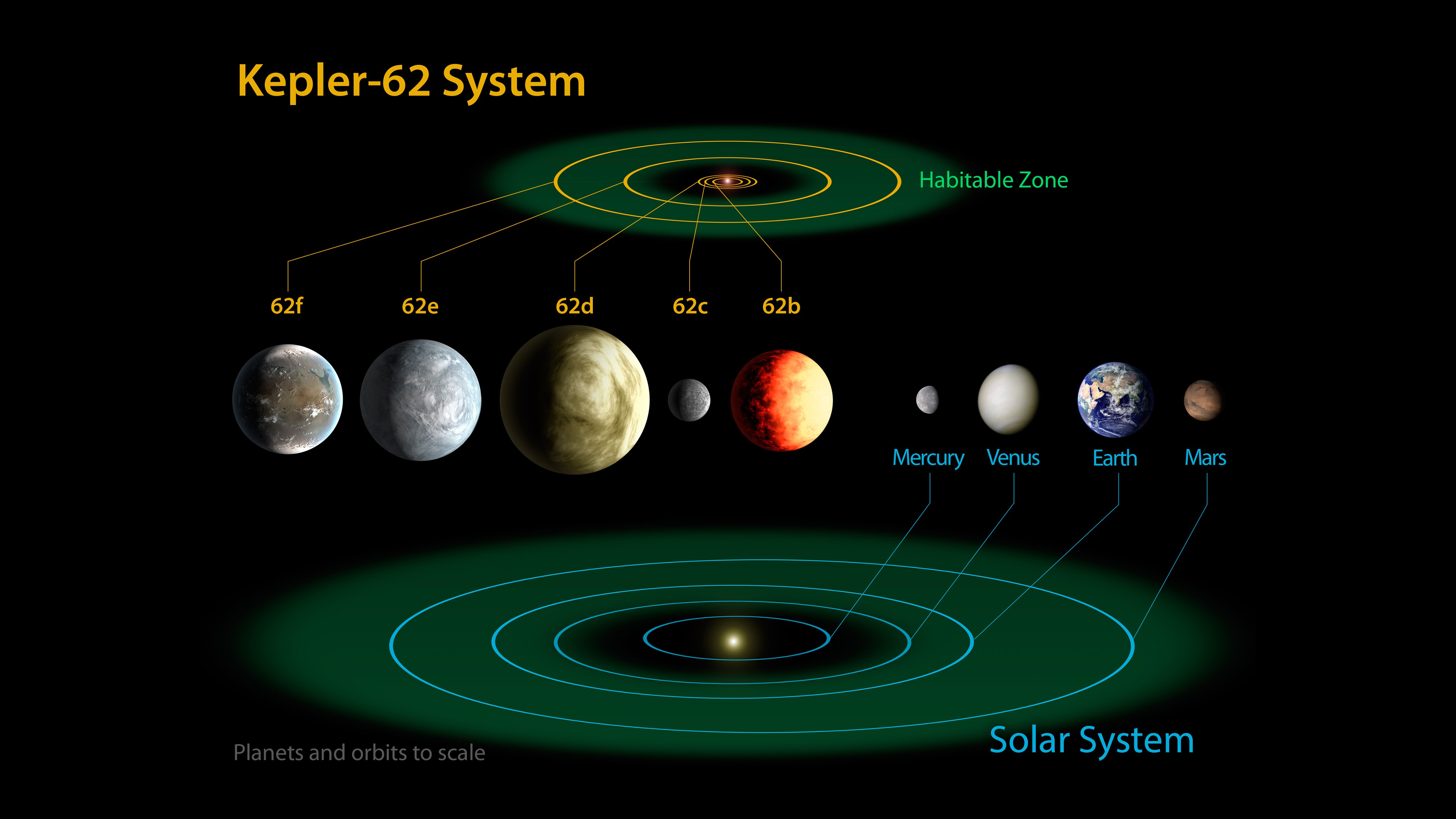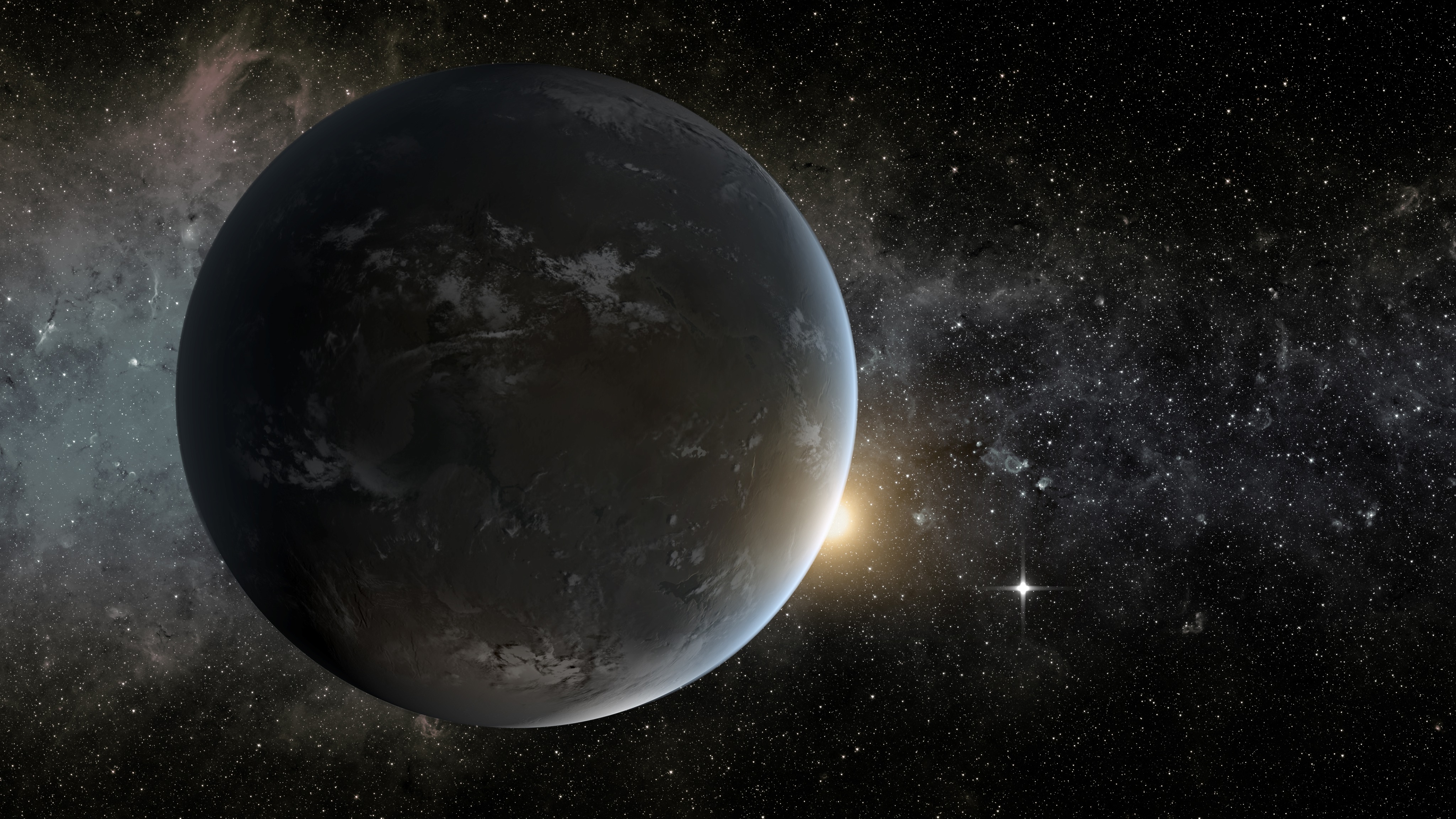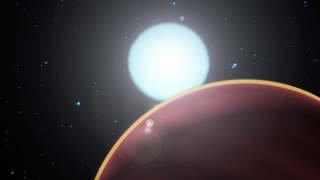Universe
ID: 30125
NASA's Kepler mission has discovered two new planetary systems that include three super-Earth-size planets in the habitable zone, the range of distance from a star where the surface temperature of an orbiting planet might be suitable for liquid water. Two of the newly discovered planets orbit a star smaller and cooler than the sun. Kepler-62f is only 40 percent larger than Earth, making it the exoplanet closest to the size of our planet known in the habitable zone of another star. Kepler-62f is likely to have a rocky composition. Kepler-62e, orbits on the inner edge of the habitable zone and is roughly 60 percent larger than Earth. The third planet, Kepler-69c, is 70 percent larger than the size of Earth, and orbits in the habitable zone of a star similar to our sun. Astronomers are uncertain about the composition of Kepler-69c, but its orbit of 242 days around a sun-like star resembles that of our neighboring planet Venus. Scientists do not know whether life could exist on the newfound planets, but their discovery signals we are another step closer to finding a world similar to Earth around a star like our sun.




Other Earths




Related
For More Information
Credits
Please give credit for this item to:
NASA Ames/JPL-Caltech
NASA Ames/JPL-Caltech
Short URL to share this page:
https://svs.gsfc.nasa.gov/30125
Mission:
Kepler
Data Used: Note: While we identify the data sets used in these visualizations, we do not store any further details nor the data sets themselves on our site.
Keywords:
SVS >> Hyperwall
NASA Science >> Universe
SVS >> Presentation
SVS >> Exoplanet
https://svs.gsfc.nasa.gov/30125
Mission:
Kepler
Data Used: Note: While we identify the data sets used in these visualizations, we do not store any further details nor the data sets themselves on our site.
Keywords:
SVS >> Hyperwall
NASA Science >> Universe
SVS >> Presentation
SVS >> Exoplanet













